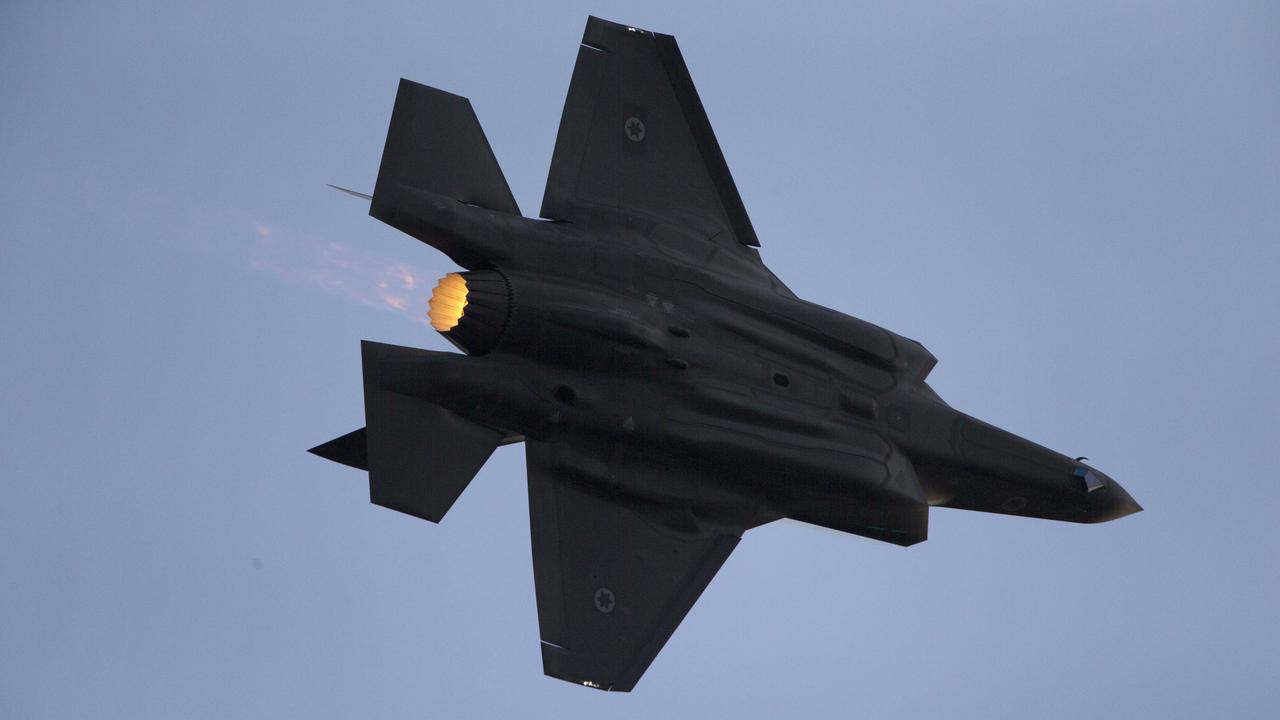F-35 stealth fighters in combat for the first time
THE defeat of a Russian air defence weapon in Syria may now have a cause: Israel has revealed it has unleashed its F-35 strike fighters for the first time.

SYRIA insisted it could defend itself. Russia said it had provided the means. But Israel’s air strikes have been spectacularly successful. Now we know why.
Israel’s air force commander has said recent strikes against Iranian targets in and around the Syrian capital of Damascus were conducted by the F-35 Lightning II stealth fighter.
It’s the first time the new combat jet has gone into action anywhere in the world.
“The F-35 squadron has become an operational squadron,” Major General Amikam Norkin told Haaretz earlier this week.
“We are flying the F-35 all over the Middle East and have already attacked twice on two different fronts.”
Israel has dubbed its version of the F-35 the “Adir” (meaning ‘mighty one’).
“The Adir planes are already operational and flying in operational missions. We are the first in the world to use the F-35 in operational activityâ€
— IDF (@IDFSpokesperson) May 22, 2018
Haarets says it has seen images of the F-35 flying over Beirut in Lebanon. It also says Major Norkin said the stealth fighter did not participate in the most recent air raids last week. But it did during the previous two.
The newspaper says more than 100 missiles have been fired — in vain — by Syrian air defences.
It’s an indication the F-35 is coming out on top in its battle against Russian-built defences.

RUSSIAN AGAINST US TECHNOLOGY
The prospect of the F-35 flying through some of Syria’s most defended air space raises the likelihood that it has faced some of Russia’s best export weaponry — and defeated it.
Damascus is one of the most heavily protected cities in the world.
It’s armed with a variety of missile systems — both new and old — by its ally, Russia.
RELATED: Here’s the US vision of future air combat
It’s underctain if Israeli F-35s have come up against these defences. But it is the job it was designed for.
Recent attacks against Iranian bases within Syria has involved ‘suppression’ of Russian-built anti-aircraft and missile systems. They’ve also involved precision strikes against arms dumps and missile stores.
The most recent round of air strikes reportedly hit more than 50 targets scattered throughoutout Syria.
Syria has been steadily upgrading its older defences. These recently succeeded in shooting-down an Israeli 1970s-eara F-16 Fighting Falcon.
EXPLORE MORE: What we know about Russia’s new stealth fighter
It’s also begun to take delivery of newer systems from Russia, including the ‘Pantsir’ air-defence system. It is uncertain whether Russia’s promised delivery of the modern S-300 long-range anti-air missile system has yet taken place.
Early indications are the F-35 holds the upper hand.
PANTSIR V. ADIR
Israel recently released video of one of its guided bombs destroying a mobile Russian-built air defence system. It was the export version of its modern self-contained ‘Pantsir-S1’ combination of guns, missiles and radar.
It’s specific purpose is to defend military formations and sites from air and missile attack.
Russian state media has been offering up a wealth of reasons why the advanced vehicle failed to defend itself, or the facility it was assigned to.
The vehicle appears to be unready. The radar, gun and missile mount is in a neutral, deactivated position.
Moscow offered a choice of two excuses for its failure:
“One is that it had already used up its ammunition reserve,” a former senior officer of Russia’s air force told RT. “The other is that it was simply turned off; it wasn’t battle ready.”
Former deputy commander-in-chief of Russia’s air force Aytech Bizhev told Russian state-run media that it takes about three-to-five minutes to activate a Pantsir. And that its small crew could not keep it active permanently.
DELVE DEEPER: The future of combat is within our own bodies
“There can be no third option, as it wouldn’t have let itself to be destroyed ... When it’s battle ready, it performs constant surveillance of enemy aircraft and has a very fast reaction time. It would have brought down those cruise missiles with either its cannons or own missiles.”
Other state-run media outlets hinted the vehicle may have already been immobilised by battle damage.
But we now know it is also possible the Pantsir had no idea it was under attack ... the the F-35’s stealth characteristics had successfully evaded detection.
However, the F-35’s advantage over Russian technology may not last long. There are fears Moscow will soon get a good look at the aircraft once the first deliveries are made to its newest best friend, Turkey.

TURKEY ‘WILDCARD’
Israel was the first nation outside the United States to take delivery of the combat jet, widely described as the most expensive militay project in history.
Israel has ordered 50 of the advanced machines. It is believed to have taken delivery of about nine.
Australia has also taken possession of the first of its instalment of about 70 machines, as has the UK, Norway, Denmark and Italy.
The next nation on the delivery list is Turkey.
But a bipartisan group of US politicians is attempting to stop it from taking place.
They say Turkish President Recep Tayyip Erdogan has become “increasingly hostile and authoritarian.” He’s also showing signs of favouring Russia over the US.
Last month, measures were introduced to US parliament to stop the delivery of F-35A fighters to the increasingly belligerent nation.
Congressman David Cicilline submitted the Bill last week, saying the US “cannot turn a blind eye to Turkey’s thuggish, reprehensible behaviour.
“The Turkish regime, led by President Recep Tayyip Erdogan, has grown increasingly authoritarian in recent years, cracking down on dissent and free speech. They have even held American citizens in captivity in order to use them as bargaining chips with the US Government.”
Turkey wants to buy 100 of the stealth fighters.
But dissent among US politicians among both sides of politics is growing.
Chief among their fears is the potential damage any technological transfer to Moscow would have on the ultra-expensive aircraft’s ability to achieve its missions.
“Turkey’s strategic decisions regrettably fall more and more out of line with, and at times in contrast to, US interests,” Senator James Lankford said in a supporting statement. “These factors make the transfer of sensitive F-35 technology and cutting-edge capabilities to Erdogan’s regime increasingly risky.”




